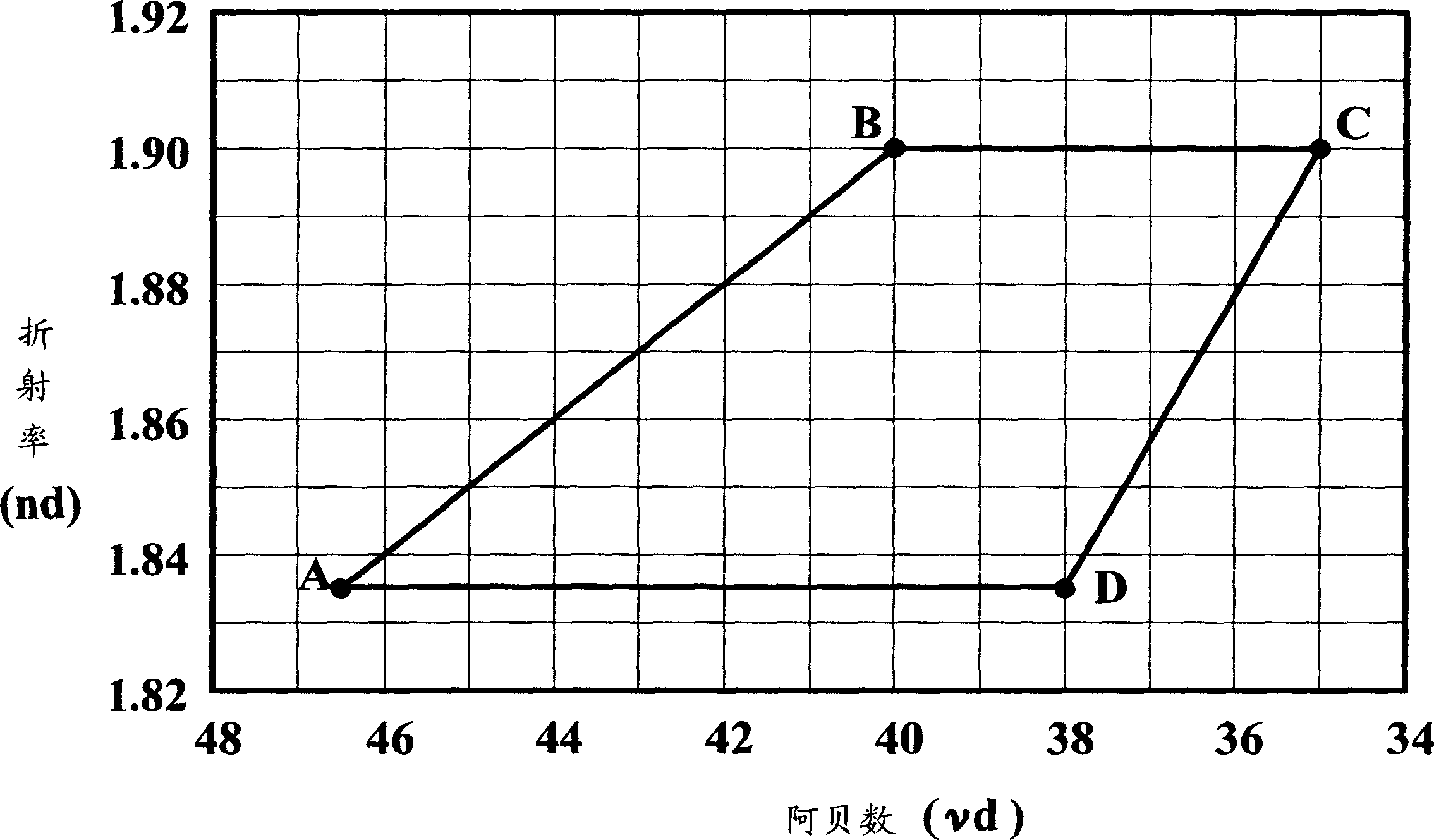Optical glass
An optical glass, refractive index technology, applied in optics, optical components, instruments, etc., can solve the problems of low resistance to devitrification, difficulty in manufacturing glass preform materials, and lack of optical constants.
- Summary
- Abstract
- Description
- Claims
- Application Information
AI Technical Summary
Problems solved by technology
Method used
Image
Examples
Embodiment
[0114] Embodiments of the present invention will be described below. However, needless to say, the present invention is not limited to these Examples.
[0115] Tables 1-6 show the compositions of examples of glasses according to the invention (No. 1 to No. 32) together with their refractive indices (n d ), Abbe number (ν d ) and transition temperature (T g ).
[0116] Tables 7 and 8 show the compositions of the glasses (No. A to No. H) of the comparative examples together with their refractive indices (n d ), Abbe number (ν d ) and transition temperature (T g ).
PUM
| Property | Measurement | Unit |
|---|---|---|
| Transition temperature | aaaaa | aaaaa |
Abstract
Description
Claims
Application Information
 Login to View More
Login to View More - R&D
- Intellectual Property
- Life Sciences
- Materials
- Tech Scout
- Unparalleled Data Quality
- Higher Quality Content
- 60% Fewer Hallucinations
Browse by: Latest US Patents, China's latest patents, Technical Efficacy Thesaurus, Application Domain, Technology Topic, Popular Technical Reports.
© 2025 PatSnap. All rights reserved.Legal|Privacy policy|Modern Slavery Act Transparency Statement|Sitemap|About US| Contact US: help@patsnap.com

